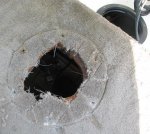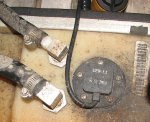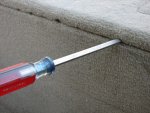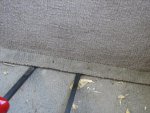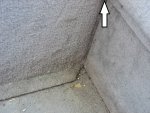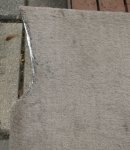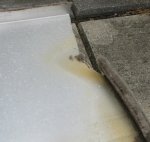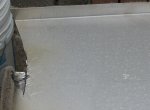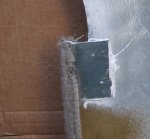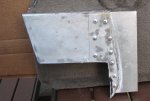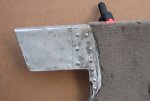theoldwizard1
Petty Officer 1st Class
- Joined
- Feb 25, 2014
- Messages
- 341
I have a 2002 Starfire 170 that is going to get splashed for the first time this year, "real soon", but of course there is some maintenance left from last year. The gas gauge quit working.
Looking through the access port in the splashwell (not sure what good that really is) I can see the connections for the fuel gauge. It appears that they have 2 male/female spade/faston connections with some vinyl sleeves over them. I am betting the gauge is good and the connections are corroded (seem like every year I have to replace the fuse in the battery compartment because it won't pass current. This year I used Fluid Film on it).
Removing the seat post base on the casting deck (and enlarging the hole) I can see the fuel gauge (the only thing on the tank with wires), but even with these access holes I really can not get in there to do any work ! The plywood base of the casting platform sits on a piece of aluminum. I don't know if that is part of the splashwell or not. Simply removing the plywood layer of the casting platform is not going to help much.
Can anyone tell me how the "face" (vertical) piece of the casting platform is attached ? Of course everything is carpeted and carpeting hides screws very well !
Also any suggestions for what to use as replacement connectors ?
Looking through the access port in the splashwell (not sure what good that really is) I can see the connections for the fuel gauge. It appears that they have 2 male/female spade/faston connections with some vinyl sleeves over them. I am betting the gauge is good and the connections are corroded (seem like every year I have to replace the fuse in the battery compartment because it won't pass current. This year I used Fluid Film on it).
Removing the seat post base on the casting deck (and enlarging the hole) I can see the fuel gauge (the only thing on the tank with wires), but even with these access holes I really can not get in there to do any work ! The plywood base of the casting platform sits on a piece of aluminum. I don't know if that is part of the splashwell or not. Simply removing the plywood layer of the casting platform is not going to help much.
Can anyone tell me how the "face" (vertical) piece of the casting platform is attached ? Of course everything is carpeted and carpeting hides screws very well !
Also any suggestions for what to use as replacement connectors ?




















